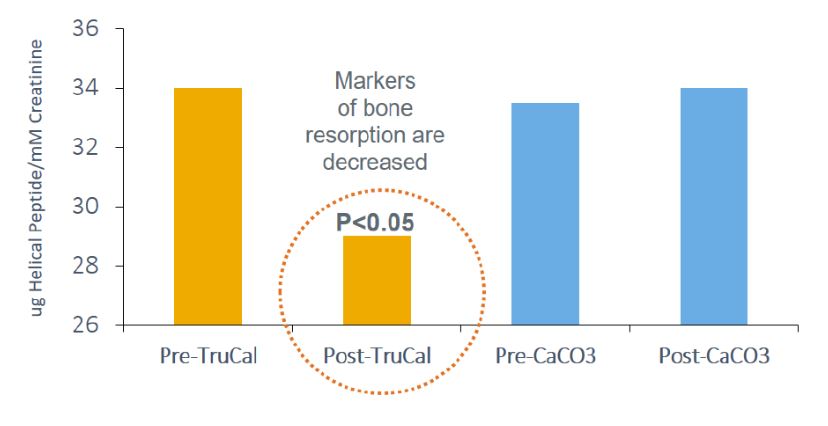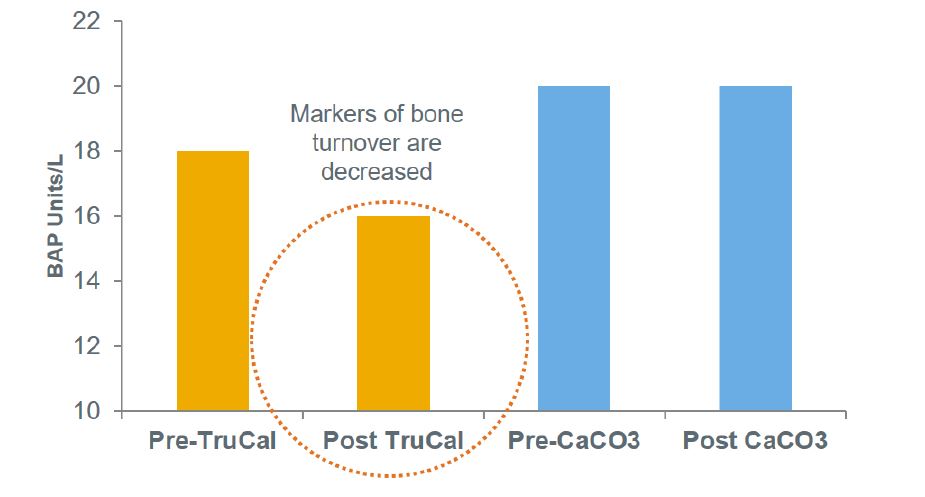
TruCal®
Balanced Milk Mineral Complex for Bone Support
TruCal® Provides Bones with Much More than Just Calcium.
Calcium in the form of calcium carbonate leads in the type of calcium that appears in most nutritional supplements. However, it and other forms of calcium are limited and do not fully provide the body with what bones need for proper support. Consumers are generally aware that calcium sourced from milk is good for the body but it also contributes a host of other beneficial minerals that provide balanced mineral support for bone health. TruCal is a balanced milk mineral complex delivering 7 minerals (Calcium, Phosphorus, Magnesium, Sodium, Potassium, Zinc, and Iron) all at similar levels to the normal mineral composition of bone.
TruCal® Provides Minerals at the Right Balance
Bones need a mineral balance, not just calcium.
| Mineral | Role in Supporting Bone Health |
|---|---|
| Calcium1 |
|
| Phosphorus2 |
|
| Magnesium3 |
|
| Sodium4 |
|
| Potassium5 |
|
| Zinc6 |
|
| Iron7 |
|
TruCal® provides a balanced milk mineral complex for optimal bone health.
- Scientifically shown to help improve bone density and strength9.
- Contains minerals sourced directly from cow’s milk, delivering them in ratios similar to the composition of bone.
- This natural balance supports the growth and maintenance of the bone structure9.
| Mineral | Human Bone Content | TruCal® Milk Minerals |
|---|---|---|
| Calcium | 26-39% | 23-25% |
| Phosphorus (in phosphate) | 11-17% | 10-15% |
| Magnesium | 0.32-0.71% | 1.5% |
| Potassium | 0.02-2.91% | 0.83% |
| Sodium | 0.65-1.00% | 0.65% |
| Zinc | 0.10-0.20% | 0.027% |
| Iron | 0.04-1.50% | 0.002% |
Other common forms of calcium lack the additional essential minerals necessary to support bone health.
- Calcium Carbonate
- Tricalcium Phosphate
- Calcium Phosphates
- Calcium Lactate
- Calcium Citrates
- Calcium Gluconate
- Calcium Lactate Gluconate
See why TruCal® is such an integral source of calcium and minerals for your supplement and food products.
Studies Show Superior Results Compared to Calcium Carbonate
TruCal® Showed Superior Results to Calcium Carbonate for Bone Breakdown8

- TruCal significantly lowered Urine Helical Peptide (UHP), which indicates a reduction in the level of bone breakdown and resorption.*
- Calcium carbonate induced no change.
TruCal® Showed Superior Results to Calcium Carbonate for Bone Turnover8

- TruCal significantly lowered Bone Alkaline Phosphatase (BAP), which indicates a reduction in the level of bone turnover.*
- Calcium carbonate induced no change.
Ideal for a Wide Range of Applications
Frequently Asked Questions
Bones need a balance of minerals to support growth and the maintenance of bone structure, density and strength. Fortification with only calcium cannot provide the full support needed.
TruCal contains 25% calcium, 12% phosphorus, 0.37% magnesium, 0.7% potassium, .009% zinc and .0005% copper.
In a clinical study, TruCal was shown to significantly lower the markers of bone resorption and turnover when compared to calcium carbonate.8
TruCal is a versatile ingredient that can be included in powder drink mixes, ready-to-drink beverages, tablets, capsules, snacks, bars, cheeses and yogurts.